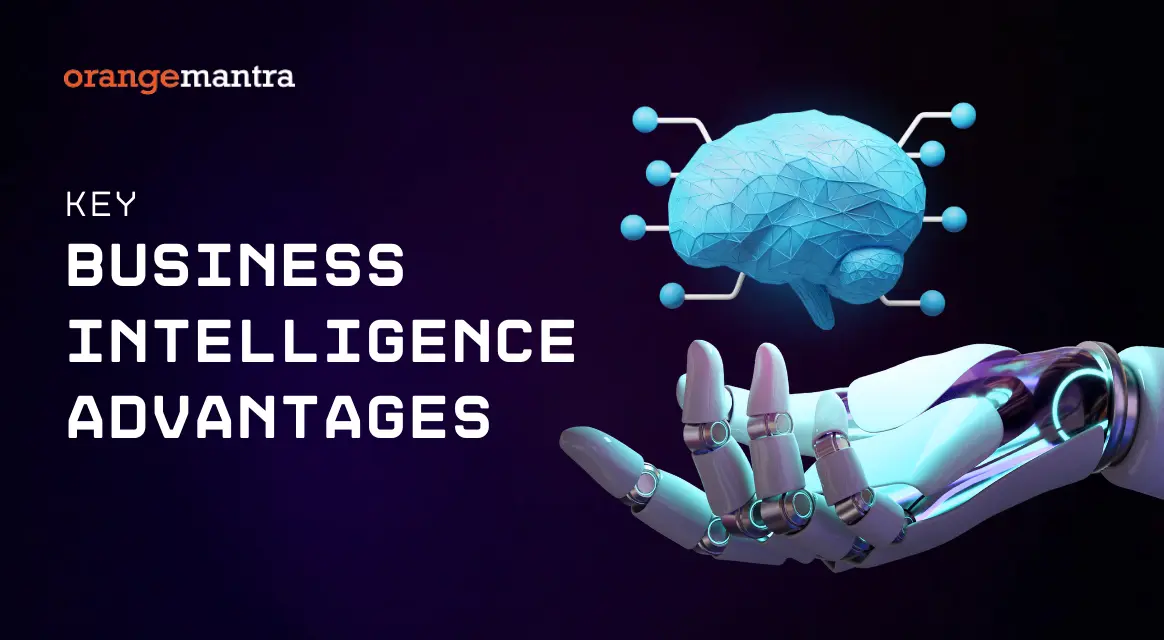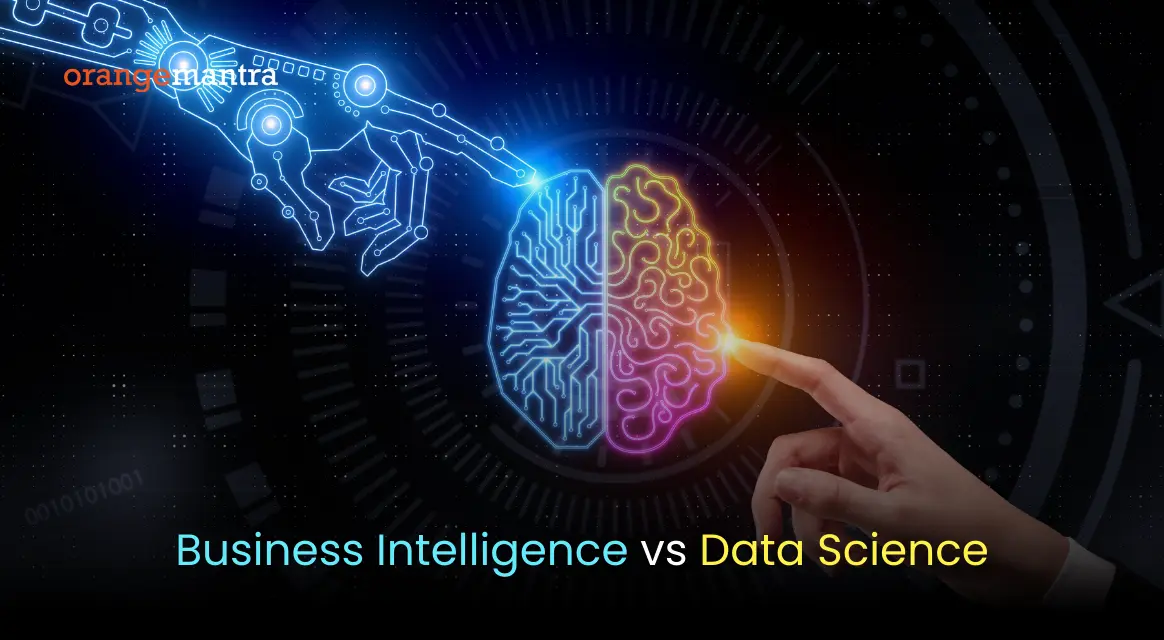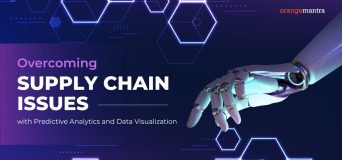
Here’s what you will learn:
“Modern Problems Require Business Intelligence Solutions”
Are you new to the whole “digital transformation” revolution? Struggling to navigate through the day-to-day demands of a contemporary business? Enter Business Intelligence.
Business Intelligence has emerged amongst the pillars of success in today’s treacherous landscape. As the demand for big data consultants in India continues to rise, now is the time to adopt the power of BI.
This comprehensive guide will help you understand what BI is and how it’s imperative to an organization’s data-driven success.
Let’s get started.
Table of Contents
How experts define Business Intelligence (BI):
Business Intelligence encompasses the various tools and strategies companies can use to collect, store, and analyze key data. The data is then presented in the form of reports, dashboards and algorithms to help stakeholders strategically plan their entire business model.
In essence, the whole business intelligence process involves using data that empowers an enterprise’s decision making, productivity, customer strategy, and ultimately, profits.
Popular BI tools/software include Power BI, Sisense, Tableau software, Zoho Analytics, Qlik, etc. These tools help enterprises convert raw data into easy-to-understand insights and stay competitive.
Note that BI doesn’t govern how a business operates. Rather, Business intelligence offers data-backed insights into how a company’s current practices are performing. It’s up to the decision makers to examine the analytics/reports and recalibrate their approach accordingly.
Through Business intelligence consultation services, businesses can identify key data points that may impact their customer satisfaction rate.
Key Business Intelligence advantages:
In today’s data driven world, Business Intelligence offers numerous benefits to decision makers and team members.
Wondering how?
Listed below are the 8 key benefits of Business Intelligence in today’s unpredictable market landscape.
1. Improved teamwide productivity and efficiency:
Perhaps the biggest advantage of BI is that corporations can utilize it to improve operational efficiency by identifying and rectifying bottlenecks.
By continuously monitoring Key performance indicators (KPIs), businesses can implement strategies that improve operational efficiency. BI adoption is also a proven strategy to reduce time and cost across various processes.
2. Make data-driven business decision:
Business Intelligence provides companies access to critical and accurate data. Collecting relevant data from various touchpoints helps businesses make better informed decisions. Thanks to a BI-led approach, companies can ditch operating on “gut feeling”, and generate actionable insights that yield guaranteed results.
3. Streamline day-to-day business processes:
By helping teams identify bottlenecks, Business Intelligence helps with streamlining the entire workflow and business operations.
Popular BI tools (ETL, visualization, dashboards, reporting, data mining, etc.) offer easy-to-understand data summary. Business Intelligence services can hence optimize and automate everyday tasks.
4. Promote cross-department collaboration:
BI promotes cross-department collaboration and communication by providing a 360-degree view of all data points. Team collaboration ensures that all departments are reviewing and processing the same data without redundancies or inconsistencies.
By providing an intuitive dashboard for data analysis and reporting, BI brings cohesion and task alignment to the entire staff.
5. Access key data metrics in real-time:
In today’s fast-paced market ecosystem, access to real-time information is the key to success. Companies that still employ legacy solutions will always stay behind the curve.
By using BI tools, enterprises can monitor key data indicators in real-time. That way, stakeholders can quickly adapt to changing market conditions and customer behavior.
6. Enjoy a competitive edge within your industry:
“Don’t follow your competitors; show them how it’s done”.
In today’s ultra-competitive market environment, having one-touch access to all company data can make a huge difference. A BI-empowered organization can forecast industry trends, monitor customer behavior, and adapt to emerging technologies better than its competitors.
7. Offer a personalized customer experience:
Corporations use several BI tools to gain valuable insights into their customers’ shopping practices, behavior, and patterns. Then, they utilize the data to offer unmatched customer experience (personalized recommendations, offers, etc.)
By acquiring business intelligence solutions, brands can also launch marketing campaigns specific to their customers’ pain points.
8. Enhanced visibility into organization’s data:
By providing a unified platform where stakeholders can access the entire organization’s data, BI promotes visibility and transparency.
Brands can effectively see how their sales strategies have impacted their bottom line (complete with relevant statistics). This allows stakeholders to see if their current strategies align with their business goals.
Potential BI challenges and roadblocks:
1. Lower adoption rates:
Despite the transformative capabilities of BI, the global adopting rate remains 26%. However, the same percentage jumps to 80% amongst companies with 5000+ employees. Still, it’s clear that many stakeholders are reluctant to come on board with the idea of adopting BI.
To gain their trust, organizations must demonstrate to stakeholders how BI can truly transform their operations. Big data consultants in India can show how BI makes it easy to access and interact with data using visualizations + intuitive dashboards.
2. “To integrate or not to integrate; That is the question”:
Data integration is a challenging task, especially when multiple data sources (both on-premises and cloud) are involved. Poor data formatting, data quality, data consolidation, etc. make the process time-consuming.
Some BI tools help with this by offering connectivity features, visualization, and scalability. Hence, companies must clearly define their integration requirements and choose the right BI tool(s) accordingly.
3. Counteracting “self-service BI”:
Traditional BI tools can sometimes be tedious to use and hence, can only be utilized by the tech staff within an organization. This dependence on IT/BI specialists can drag the entire reporting process.
For a successful “self-service BI” strategy, it’s important to strike a balance between governance, data availability, and ease of use. The entire team must be able to access data points and create individual reports.
4. Implementing BI across all user segments:
Without a unified BI delivery method, organizations can only tap into a finite number of user segments. As of now, the platform lacks a “one size fit all” solution that provides central governance, data security, and management.
Therefore, enterprises must carefully examine which BI delivery methodology best suits their needs based on current operational needs.
Key to a successful “Business Intelligence adoption” strategy:
1. Understand your data analytics requirements:
Carefully examine the quality, accessibility and ease of sharing within your existing data. Also, based on the data integration challenges that you may have, pick the best BI software. Finally, manage and organize data to ensure accuracy. You don’t want a scenario where different departments store the same data but in different formats.
2. Engage stakeholders from the start:
Collaborate with stakeholders from different departments early on, so that the BI solution you choose aligns with their business goals. Let them know how business intelligence consulting services can transform the way they access, manage, and share information.
3. Start small, go big:
Companies at the start of their digital transformation journey must gradually integrate BI tools to test their suitability and effectiveness. Once they’ve identified all the issues and perks, scale gradually and implement BI into more areas.
4. Invest in training and upskilling:
Companies must invest in various employee training programs. This will help team understand how to effectively derive key insights and remove silos. The entire workforce must have some understanding of business intelligence life cycle for maximum productivity.
5. Know which BI tools are best suited for your company:
Different BI tools will be suited to different organizational needs based on their user requirements, level of expertise, budget, etc. Choose the BI solution that addresses your needs, expectations and operational deficiencies.
6. Implement proper compliance and governance:
There should always be data governance policies in place to ensure that all members adhere to the data sharing and security protocols. Teams must be constantly reminded of the best data handling and storage practices to avoid policy violations.
Business Intelligence v/s Data Science:
1. Purpose:
Business intelligence helps derive foundation-level knowledge to help in day-to-day decision-making.
On the other hand, data science involves a more in-depth analysis (using machine learning and predictive modeling techniques) to influence long-term planning.
2. Uses/Applications:
BI usually processes structured data and emphasizes reporting, data sharing, and process visualization. This helps companies predict future trends using historical data.
Meanwhile, data science involves processing structured, semi-structured, and unstructured data. Here, the added complexity makes data science suited to statistical modelling and machine learning.
3. Tools & technologies:
Power Bi, Tableau, and Qlik are amongst the best business intelligence software for data creation, visualization, and reporting. SQL is the primary language used for querying/manipulating information in relational databases.
Data science uses programming languages like Python that requires an in-depth understanding of statistical methods. Talend, IBM Datacap, and Jupyter Notebooks are some popular data toolkits.
4. User base:
Traditional BI tools can be used by BA team, project managers, stakeholders/CEOs, etc. to easily understand key data.
Data science is mostly used by data scientists and business analysts to map long-term business strategies.
As we can see, Business intelligence focuses on real-time data to offer quick and actionable insights. However, data science focuses on long-term strategy mapping using machine learning and predictive modelling.
While BI and data science may have some key distinctions, they also complement each other. Both concepts are integral to a company’s successful sales and decision-making strategy.
In Conclusion: –
BI is not some ultra-futuristic, next-gen concept that only the industry leaders can comprehend or implement. Having said that, it’s also true that handling the sheer range of BI tools can be overwhelming, especially for SMEs and MSMEs.
Hence, it might be worth collaborating with a team of tech gurus capable of offering adaptable BI resources with minimal TCO.



